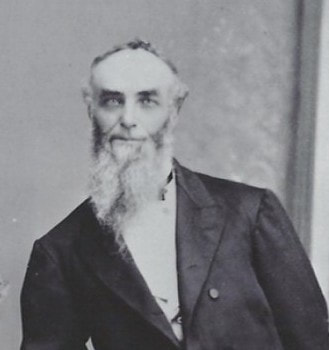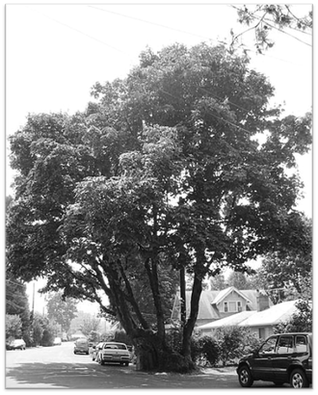History of Gladstone, Oregon
For reference: Present day Portland Avenue (Gladstone's main street) not only is the dividing line between east and west Gladstone, but it also marks the adjoining boundaries of the two founding land claims as discussed in this history. Gladstone History last Update 2018.
|
Gladstone is located on the north bank of the Clackamas River where it joins the Willamette River. The earliest residents were indigenous peoples (the most recent being the Chinook-speaking Clackamas) who occupied this area from earliest times until around 1840, when Jason Lee and his Methodist Mission claimed much of what is now East Gladstone and called it Klackamus Farm.
In 1843, James Robb, one of the emigrant Mission employees, purchased Klackamus Farm. The following year, he sold the tract to the Fendel Cason family from Virginia, emigrants who had arrived in Oregon the previous year. The family settled and began homesteading. In 1845, Ohio-born Jacob Rinearson filed for a donation land claim of 640 acres that adjoined the Cason farm to the west. His land stretched from the north shore of the Clackamas River to what is now Jennings Lodge. Jacob was accompanied west by his younger brother, Peter. During their trek along the Oregon Trail, both brothers became enamored of sixteen-year-old Rebecca Cornelius, daughter of Absalom and Elizabeth Cornelius. Rebecca preferred Peter and married him. Jacob good-naturedly relinquished his land claim to his brother. |
James R. Robb, member of Elijah White's
1843 wagon train to Oregon. |
|
The PowWow tree is located on W. Clackamas Blvd. Between Bellevue Ave. & Beatrice Ave. approximately 1½ blocks w. of Portland Ave. In 2004, the tree was listed on the National Historic Trees Registry by the Cultural Landscape Foundation in Washington DC.
|
On what was once the southeast corner of the Rinearson Land, Gladstone's famous Pow-Wow Tree still stands. It is an important landmark in Gladstone's history and witness to clannish trade agreements, disputes and settlements, wedding ceremonies, burials and other such native community events.
The tree also marked the entrance to the first Clackamas County Fair in 1860 that was held on 4 acres of the Rinearson Land along the banks of the Clackamas River In 1861, the first Oregon State Fair was held at the same location. During the Civil War, this same fairgrounds served as a place to muster cavalry volunteers for the federally authorized local militia. On Christmas day of 1869, Ben Holladay (Overland Stage) brought the railroad to Gladstone. Six-hundred Chinese laborers helped him build a railroad bridge over the Clackamas River near what is now called High Rocks. Holladay's rail line now connected Oregon City to all points north, and it would one day become the Southern Pacific Railroad. Also, in 1869, Ad Cason built the first school (aka as the Little Red Schoolhouse) on his father's land. Only one room and only large enough to accommodate the Rinearson and Cason children, six years later it became part of School District No. 48. |
Top Photo: The first business opened in Gladstone about 1890 and was a store owned by Judge Harvey Cross' brother, Mitt Cross. The store's actual location is unknown but thought to have been built on Portland Avenue near the 1893 trolley depot (northeast corner of Portland Avenue and Dartmouth Street.
Shown in the photo (l-r) are three of the Cross brothers and an unknown man.
Shown in the photo (l-r) are three of the Cross brothers and an unknown man.

